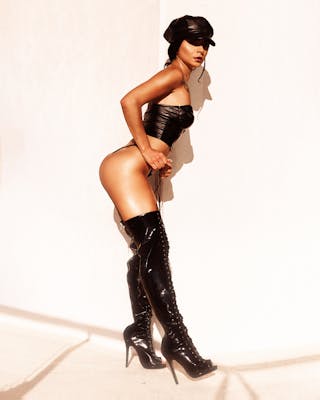Creating An Asexual Character For TV Showed Me We Have A Way To Go
Representation matters, and when it comes to asexuality on TV, there's still a long road ahead. While strides have been made in recent years, with a few characters here and there, there's still a lack of diverse and nuanced portrayals of asexual individuals. It's important for the TV industry to continue pushing for more authentic and positive representation of asexuality, so that people of all sexual orientations can feel seen and understood. Check out this site for more information on the importance of diverse representation in media.
When it comes to representation in the media, the LGBTQ+ community has made significant strides in recent years. However, one group that is often overlooked is the asexual community. As someone who identifies as asexual, I have always longed to see characters like myself represented on television. So, when I heard that a popular TV show was introducing an asexual character, I was thrilled. However, as I watched the storyline unfold, I couldn't help but feel disappointed by the way the character was portrayed. It became clear to me that we still have a long way to go when it comes to accurately representing asexuality on screen.
The Importance of Representation
Check out the best places to enjoy a fun and sexy night out in Austin and spice up your evening with a new adventure.
Representation matters. Seeing people who look like us, who love like us, and who experience the world in similar ways to us, is incredibly validating. For the asexual community, this is especially important. Asexuality is still widely misunderstood, and many people have never even heard of it. As a result, asexual individuals often feel isolated and marginalized. Seeing a character on a popular TV show who identifies as asexual could have been a huge step forward in raising awareness and understanding of asexuality. Unfortunately, the portrayal of the character fell short of capturing the true essence of asexuality.
Explore the possibility of finding a life partner from New Zealand
Misconceptions and Stereotypes
One of the biggest issues with the portrayal of the asexual character on the TV show was the perpetuation of misconceptions and stereotypes. Throughout the storyline, the character was depicted as emotionless and unfeeling, perpetuating the harmful stereotype that asexual individuals are cold and uninterested in romantic relationships. This could not be further from the truth. Asexuality is a spectrum, and asexual individuals are just as capable of experiencing love, romance, and emotional connections as anyone else. By portraying the character in such a one-dimensional way, the show missed a valuable opportunity to challenge these harmful stereotypes and educate the audience about the true diversity of asexuality.
Lack of Depth and Complexity
In addition to perpetuating misconceptions, the portrayal of the asexual character lacked depth and complexity. Rather than exploring the character's experiences and emotions in a meaningful way, the show reduced them to a mere plot device. This not only did a disservice to asexual viewers who were hoping for a nuanced and authentic representation, but it also missed an opportunity to explore the richness of asexual identity. Asexuality is a complex and multifaceted orientation, and there are countless stories to be told about the experiences of asexual individuals. By reducing the asexual character to a shallow stereotype, the show missed an opportunity to delve into these important narratives.
Moving Forward
While the portrayal of the asexual character on the TV show was disappointing, it also served as a reminder that we still have a long way to go when it comes to representing asexuality in the media. However, there is hope. As awareness and understanding of asexuality continue to grow, there is a growing demand for more authentic and diverse representation in the media. It is my hope that in the future, we will see asexual characters who are portrayed with the depth, complexity, and authenticity that they deserve. Until then, it is important for asexual individuals and their allies to continue advocating for accurate representation and challenging harmful stereotypes.
In conclusion, the introduction of an asexual character on a popular TV show was a missed opportunity to authentically represent asexuality. The portrayal of the character perpetuated harmful stereotypes and lacked the depth and complexity that asexuality deserves. However, as awareness of asexuality continues to grow, there is hope for more authentic representation in the future. It is important for asexual individuals and their allies to continue advocating for accurate representation and challenging harmful stereotypes in the media.
- https://chatting.getweps.com/posts/chat-sites-11-of-the-best-chat-sites-for-hookups-and-dating/
- https://hookupguide.timebombrecordings.com/posts/sex-toys-for-men-16-best-male-sex-toys/
- https://singles-chat.timebombrecordings.com/posts/
- https://dating-app.campsupernow.com/posts/bbcs-sex-on-the-couch-is-here-to-teach-us-all-so-much-about-sex-and-relationships/
- https://matchmaker-website.timebombrecordings.com/posts/sex-toys-for-couples-27-best-sex-toys-for-couples/
- https://hookupguide.thehottieandthenottie.com/posts/my-best-sex-ever-was-with-a-love-islander/
- https://hookup-blog.getweps.com/posts/discreet-vibrator-best-discreet-sex-toys/
- https://hookup.timebombrecordings.com/posts/bath-sex-bathroom-sex-tips/
- https://chat.campsupernow.com/posts/my-best-sex-ever-was-with-my-housemate/
- https://find-a-girlfriend.getweps.com/posts/5-sex-positions-perfect-for-internal-gspot-stimulation/
- https://dating.timebombrecordings.com/posts/homemade-sex-toys-diy-sex-toys-to-make-at-home/
- https://dating-chat-room.getweps.com/posts/friends-with-benefits-pros-and-cons-of-casual-sex-with-a-friend/
- https://free-dating-website.thehottieandthenottie.com/posts/netflix-sex-shows-50-netflix-sex-scenes-hotter-than-porn/
- https://free-dating-website.timebombrecordings.com/posts/virtual-sex-parties-i-went-to-a-zoom-sex-party-online/
